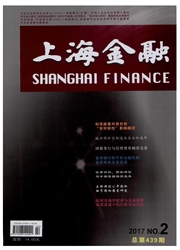

 中文摘要:
中文摘要:
众多研究表明,我国的菲利普斯曲线是一条兼顾前瞻性和后顾性的新凯恩斯混合型菲利普斯曲线。有鉴于此,本文通过构建新凯恩斯混合菲利普斯曲线模型并基于1994Q1—2010Q3数据估计了我国的标准化和非标准化MCI指数。实证检验表明,新凯恩斯菲利普斯曲线比不合预期的菲利普斯曲线表现出更好的计量经济学特征。本文得到的标准化MCI指数显示,利率变化和;12率变化对通胀的影响力基本相当,但;12率变化对通胀的影响更迅速。本文认为,在利率工具受到制约的通胀背景下,进一步增强人民币汇率弹性,适当利用人民币升值来降低通胀压力,应该是我国反通胀货币政策的一种可行选择。
 英文摘要:
英文摘要:
A large number of empirical studies show that China's Phillips Curve is a New Keynesian Hybrid Phillips Curve, which is both forward-looking and backward-looking. In view of this, we build a New Keynesian Hybrid Phillips Curve and estimate China's standardized and unstandardized MCIs based on the data from 1994Q1 to 2010Q3. Empirical tests show that the new Keynesian Phillips Curve has better econometric features than the Phillips Curve that does not contain the expectation term. The standardized MCI obtained in this article shows that the influential power of interest rate on inflation is roughly equal to that of exchange rate, but the impact of exchange rate changes on inflation is faster than that of interest rate changes. This article argues that when the application of interest rate tool is constrained in the context of inflation, it should be a viable option for China's anti-inflationary monetary policy to further enhance the flexibility of RMB exchange rate and to reduce inflationary pressures using the RMB appreciation appropriately.
 同期刊论文项目
同期刊论文项目
 同项目期刊论文
同项目期刊论文
 期刊信息
期刊信息
